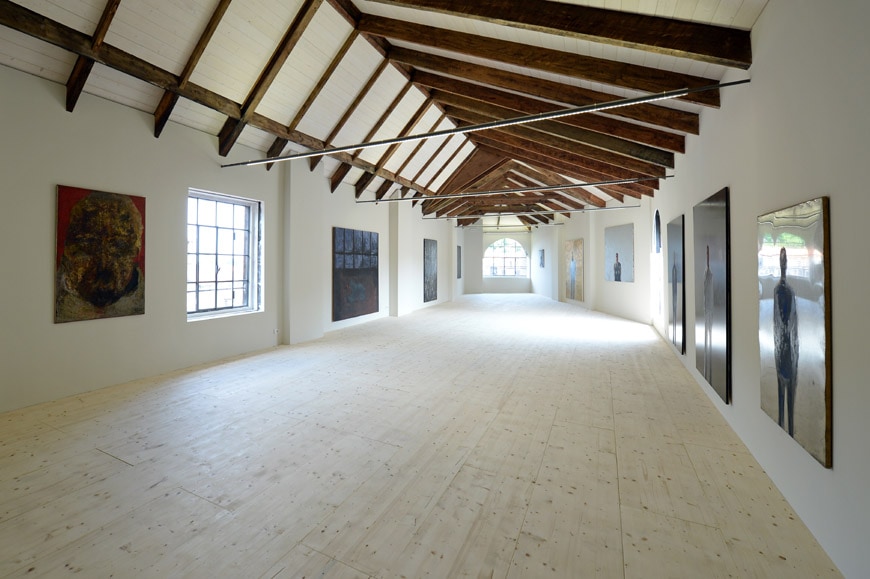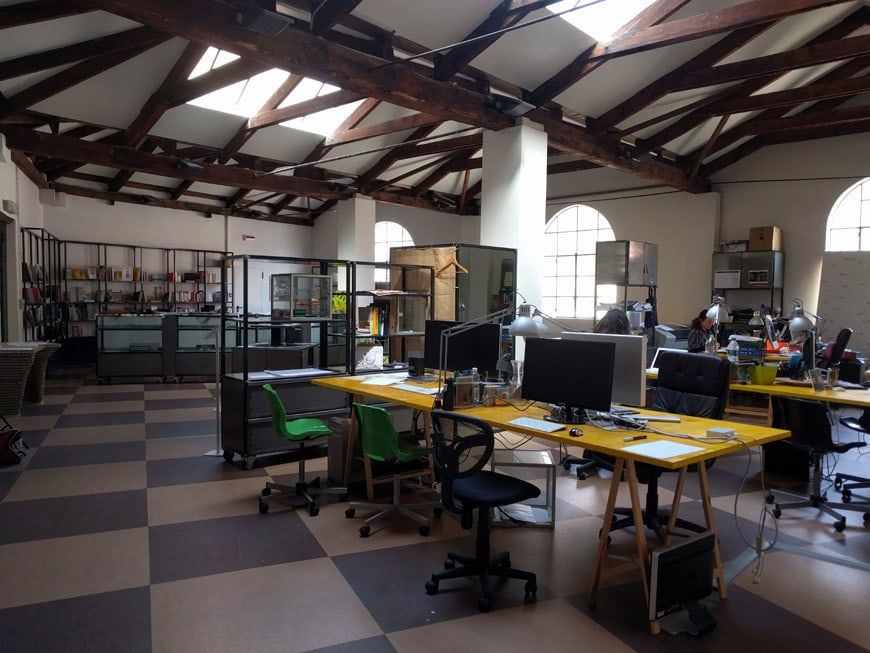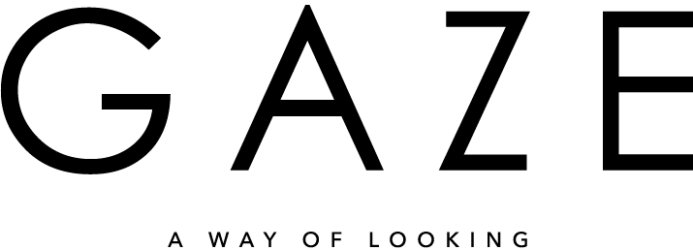Por Sheilla Cohen.
Hace un mes y medio, tuve la oportunidad de asistir a una ponencia que impartió el artista y Michelangelo Pistoletto (Biella, 1933) en Casa Nuestra. La obra del artista italiano, considerado el mayor exponente del arte povera, un movimiento artístico surgido en Italia a mediados de los años sesenta que se caracterizó por reciclar materiales sencillos y objetos cotidianos que estaban al alcance de cualquiera para crear obras de arte –en su mayoría instalaciones– como una crítica al consumismo producto del capitalismo desbocado.

Cittadellarte – Fondazione Pistoletto, Biella.
Cortesía de Cittadellarte – Fondazione Pistoletto
Foto: Enrico Amici
En la plática el artista habló de la capacidad del arte como un medio para la regeneración social, una visión que a pesar de ser idealista se ha materializado a través de la creación de la Cittadellarte-Fondazione Pistoletto, un nuevo modelo de formación artística, con el objetivo de producir una transformación responsable de la sociedad global, a partir de sus dimensiones locales más pequeñas.
A través de esta fundación no-lucrativa construida en 1996 en su ciudad natal, en una antigua fábrica de textil junto al río Cervo en Biella, Italia. Michelangelo Pistoletto, propone un nuevo papel que el artista contemporáneo de asumir: ser un agente activo comprometido con la regeneración social para contribuir de manera responsable a través de las actividades e intervenciones artísticas que se llevan acabo en este espacio y alrededor del mundo con la finalidad de involucrar a todos los sectores de la sociedad civil para abordar los profundos cambios de nuestra sociedad.
A continuación, les comparto la breve entrevista que le hice a uno de los artistas cuya trayectoria y práctica artística más admiro por su contribución a nuestra cultura para que nos contara un poco más cerca de este innovador proyecto social.

One of the rooms of the Arte Povera permanent gallery and the “Painting Room” space.
Cortesía de Cittadellarte – Fondazione Pistoletto
Foto: Enrico Amici
Fuiste uno de los mayores exponentes del arte povera. ¿Cuál era el principio de este movimiento artístico?
El surgimiento de la fotografía generó una crisis en el arte visual porque ya no era necesario representar la realidad, contar la historia de la vida. En aquella época cada movimiento buscada una posibilidad específica para que el arte sobreviviera a pesar de no ser representativa.
El arte povera fue un movimiento radical que buscaba excluir cualquier posibilidad de explotar el arte para fines políticos y/o económicos sino para reconectar la mente artificial y el cuerpo práctico. Radical que en italiano se dice radicale que proviene de la palabra radice que significa raíz, el origen.

One of the co-working spaces.
Cortesía de Cittadellarte – Fondazione Pistoletto
Foto: Enrico Amici
El arte povera se caracterizaba por reutilizar y reciclar los materiales y objetos que están al alcance de cualquiera. ¿Qué opinas de la comercialización del arte?
A pesar de que el arte póvera se considera un movimiento contestatario al arte pop, al final fui incluido dentro de éste porque en parte se caracterizaba por crear arte que fuera cercano a la objetividad de la realidad y esto es algo esencial en mi obra. Sin embargo, mi realidad no era la visión consumista de la realidad americana, sino una visión más universal que me condujo a una creación más democrática del arte.
En el proceso tuve la oportunidad de ver como los artistas se convertían en una especie de marcas-producto del consumismo por ejemplo; a mi siempre me asociaban con mis “Mirror Paintings”. Y como me negaba a aceptar eso, quería recuperar mi autonomía destruyendo mi identidad, dejar de ser identificado como un producto.
Por eso realicé esas acciones en donde destrozaba los espejos que reflejaban mi imagen; quería tener la libertad de crear un cuerpo de obra diferente, distanciándome lo más posible de cualquier idea de uniformidad.

Cittadellarte – Fondazione Pistoletto, Biella.
Cortesía de Cittadellarte – Fondazione Pistoletto
Foto: Enrico Amici
Creaste un símbolo el “Tercer Paraíso” que has reproducido en diferentes formatos. ¿Cuál es su significado de este signo ?
El concepto nace de la palabra paraíso que en persa antiguo significa jardín. Son tres circunferencias, el primer paraíso es el de la integración total entre hombre y naturaleza, el segundo es el mundo artificial creado por la inteligencia humana y el tercero surge de la reconfiguración entre los dos. La dualidad da lugar al tercer elemento, una nueva sociedad.
Para materializar esta idea dibuje un signo, ampliando el símbolo del infinito (un ocho en posición horizontal) con un tercer círculo, que representa la matriz generativa de una nueva humanidad capaz de superar el actual conflicto destructivo entre naturaleza y artificio.

The “Columns’ Room” exhibition space.
Cortesía de Cittadellarte – Fondazione Pistoletto
Foto: Enrico Amici
¿Cuál consideras que es la finalidad del arte?
Desde mi punto de vista el arte no solo debe de ser vista como una profesión para vivir de la creación, sino también, es esencial que el arte aporte algo a la sociedad. El arte es la máxima expresión de la libertad, hay que colocarlo en el centro de una transformación responsable de la regeneración social.
En ese sentido, ¿cuál es el compromiso que debería tener el artista con la sociedad?
El artista tiene dos trabajos, producir objeto estéticamente bellos, crear y regenerar la sociedad. La misma sociedad es el material con el que debe trabajar.

former Lanificio Trombetto wool mill, the “Music Room”
Cortesía de Cittadellarte – Fondazione Pistoletto
Foto: Enrico Amici
¿Cómo se puede regenerar la sociedad a través del arte?
Precisamente es lo que hacemos en Cittadellarte, un dentro de formación y producción artística en el que se intercambian ideas desde múltiples disciplinas con la finalidad de integrar el arte en la vida y en la sociedad. Su programación incluye actividades educacionales y de investigación, conferencias, exposiciones temporales, proyecciones, performances en vivo, seminarios, talleres, y eventos especiales.

Cortesía de Cittadellarte – Fondazione Pistoletto
Foto: Enrico Amici
______________________________________________________________________________
Michelangelo Pistoletto: Art for social regeneration
By Sheilla Cohen.
A month and a half ago I had the privilege to attend a conference given by the legendary artist and Michelangelo Pistoletto (Biella, 1933) at Casa Nuestra. The work of this Italian artist, considered one of the main exponents of arte povera, an artistic movement that emerged in Italy in the mid 60s which was characterized for recycling simple materials and everyday objects to create artworks –mostly installations– as a way to criticize the consumerism society that was a result of a non-regulated capitalism.
In the lecture, the artist spoke about art as a vehicle of social regeneration, a vision that, despite being idealistic, has been materialized through the creation of the Cittadellarte/Fondazione Pistoletto, a new model of artistic formation, that was founded in 1996 in a textile factory along the Cervo river, in his hometown, Biella, Italy, with the purpose of producing a responsible transformation of a global society, starting from its smallest local dimensions.
Through out this foundation, Michelangelo Pistoletto proposes a new role that the contemporary artists must assume, being active agents committed to the transformation of society and contribute responsibly through the artistic activities and public interventions that have taken place this space and around the world with the purpose of involving all sectors of civil society to address the profound changes in our society.
You were one the greatest exponents of art povera. What was the principle of this artistic movement?
Arte Povera was a radical movement that sought to exclude any possibility of exploiting art for political and / or economic purposes, but to reconnect the artificial mind and the practical body. Radical which is called in Italian radicale derives from the word radice which means root, the origin.
The emergence of photography generated a crisis in visual arts because it was no longer necessary to represent reality, to tell the story of life. At that time, each movement seek out for specific possibilities that would make art survive despite not being representative.
Art povera was characterized for reusing and recycling the materials and objects that are available to anyone. What do you think of the commodification of art ?
Despite the fact that art povera was considered a protest movement against Pop Art, in the end I was included, because it was characterized in part by creating art that is close to the objectivity of reality and this is essential in my work. However, my reality was not the consumerist vision of American reality, but a more universal vision that led me to a more democratic creation of art.
In the process I had the opportunity to see how artists would become a kind of consumeristic product-brand for example; for a long while I was always associated with my «mirror paintings». I refused to accept that, I wanted to regain my autonomy by destroying my identity and stop being identified as a product.
That is why I carried out those actions where I destroyed the mirrors that reflected my image. I wanted to have the freedom to create a different body of work, distancing as much as possible from any idea of uniformity.
Your most recent works are characterized by representing the symbol of the «Third Paradise» in different formats. What is the meaning of this sign?
The concept was born from the word paradise, which in ancient Persian means garden. There are three circles, the first paradise is that of total integration between man and nature, the second is the artificial world created by human intelligence, and the third comes from the reconfiguration between these two. The duality gives place to the third element, a new society.
To materialize this idea, I draw a sign, expanding the infinity symbol (an eight in a horizontal position) with a third circle, which represents the generative matrix of a new humanity capable of overcoming the destructive conflict between artifice and nature.
What do you consider to be the purpose of art?
From my point of view, art should not only be seen as a profession to live from creation, but also, it is essential that art contributes in someway to our society. Art is the maximum expression of freedom, it must be placed at the center of a transformation responsible for social regeneration.
In this sense, what is the artist’s commitment to society?
The artist has two jobs; to produce aesthetically beautiful objects and to create and regenerate society. Society itself is the raw material with which the artist must work.
How can our society be regenerated through art?
That is precisely what we do at Cittadellarte, an artistic formation and production were ideas are exchanged from multiple disciplines with the concept of integrating art within society and life. Its programming includes; educational and research activities, conferences, temporary exhibitions, screenings, live performances, seminars, workshops, and special events.


